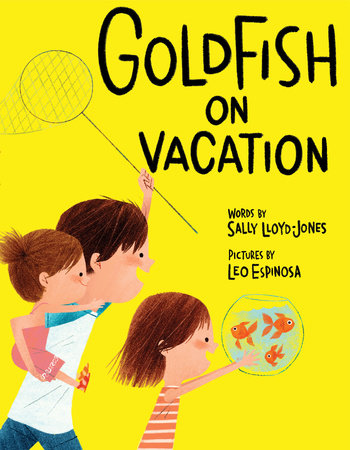Goldfish on Vacation Leads Children on an Unexpected Journey Connecting Generations
by Jennifer Garry
Some books are the type that you read, put down, and forget all about. Other books have characters who stick with you long after you turn the last page. And some books make you curious and lead you down a rabbit hole of learning and research — as was most definitely the case when my 7-year-old daughter and I read Goldfish on Vacation, a picture book written by Sally Lloyd-Jones and illustrated by Leo Espinosa.
The story is about three siblings, their three goldfish, and their grandpa who are stuck in New York City all summer. It looks like life is going to be incredibly boring — until something kind of magical happens. Down the street from their apartment, there is an old fountain that’s covered in garbage and ivy. Grandpa tells the kids all about how horses used to drink from it in the old days. Now people have no use for it and have stopped taking care of it entirely. But one day, the children notice a sign in the fountain that says, “Coming in two weeks! Calling all goldfish looking for a summer home.”
The children (and grandpa) are ecstatic. They watch each day as a man comes and cleans out the fountain, adding lily pads and reeds. It turns out they’re not the only ones who are excited. On the big day, lots and lots of children are lined up to drop their goldfish off on vacation. The fountain becomes a meeting ground. Children come to check on their fish and end up talking and playing together day after day. Grandpa even pulls up a chair and tells them stories about the fountain when he was a boy.
The book is a really sweet story of community and connecting the past with the present — a theme that is helped along by beautiful retro-style illustrations. My daughter liked it enough on its own, but when we reached the author’s note in the back, her little mouth dropped open.
The book is based on actual events. Between 1992 and 2005, the fountain was filled with goldfish during the summer months. After taking a second to digest that information, the questions started. Is the fountain still there? Where is it? Does it really look like that?
A sucker for encouraging curiosity whether it’s bedtime or not, I turned to Google to help answer some of her questions. We saw photos of what the fountain looks like today and could locate it on a map and talk about it in relation to places we’ve been, like the American Museum of Natural History.

My daughter also wanted to see photos of it in the past, which lead us to look for photos of goldfish in the fountain and horses drinking from it. And, of course, questions tend to lead to more questions. We talked about how, before cars, people used to get around with horses and a lot of the fountains in New York were created for the horses to drink from. She wanted to know how the horses ate and who took care of them and, of course, what happened to all that horse poop.
I took that last question as a cue to wrap things up for the night. (I mean, how did we get from a picture book about goldfish to horse poop in historical New York City?) Still, I was impressed that a book which sweetly connected the generations (grandpa and his grandkids, the olden days and the present day) also inspired us to go on a fact-finding mission that more or less did the same.
I never expected a bedtime story to take us on this kind of journey. I can’t help but wonder where this book will take your young reader.

